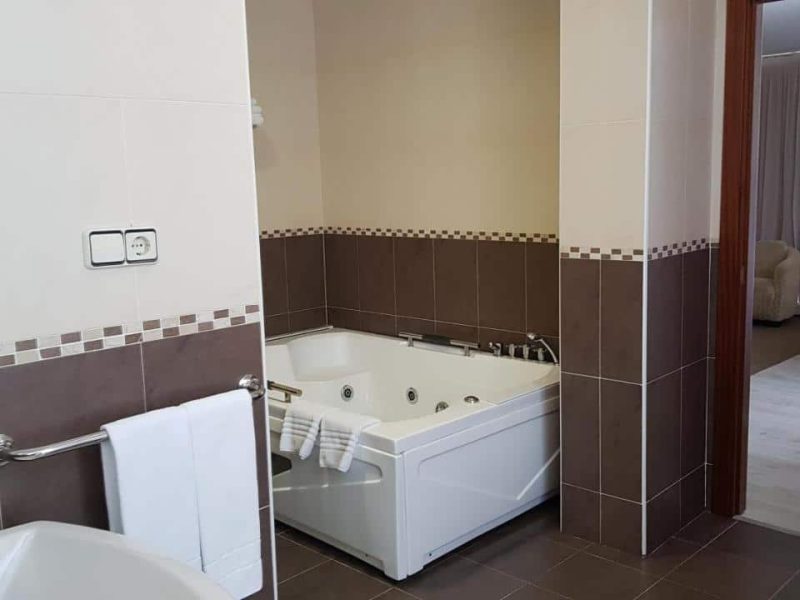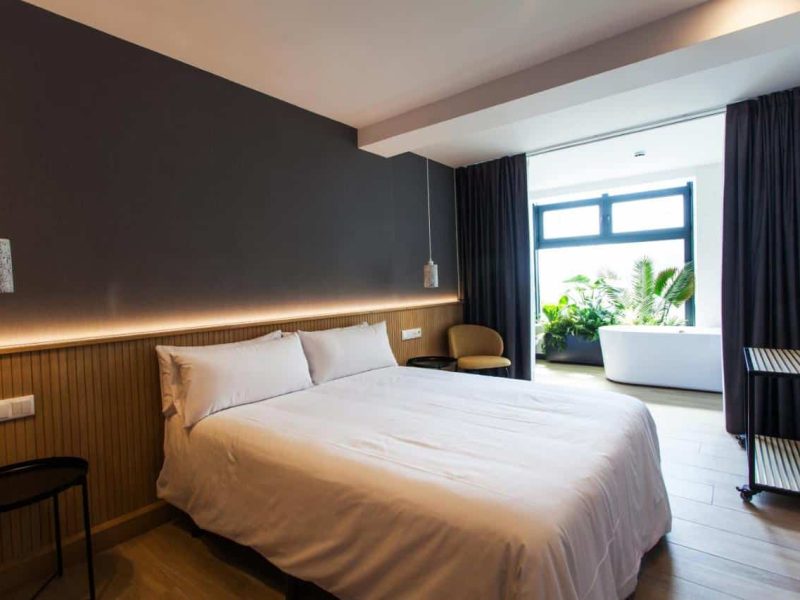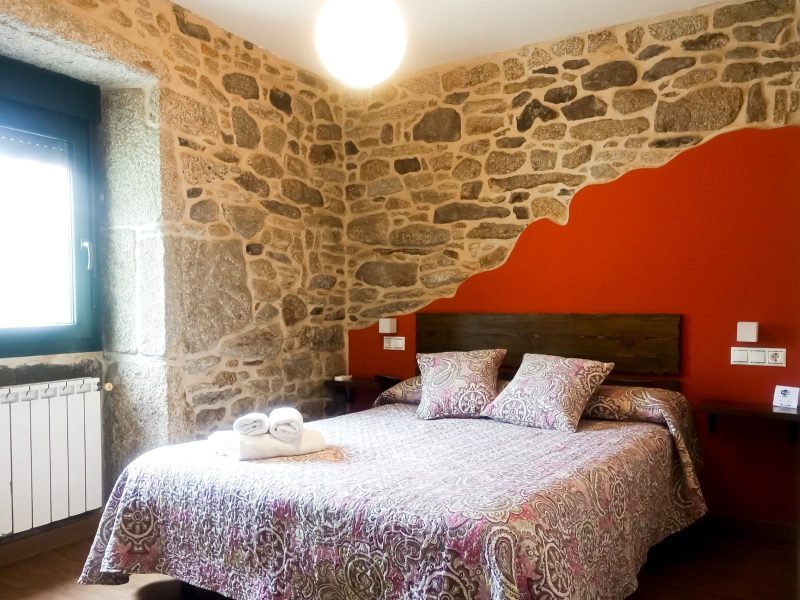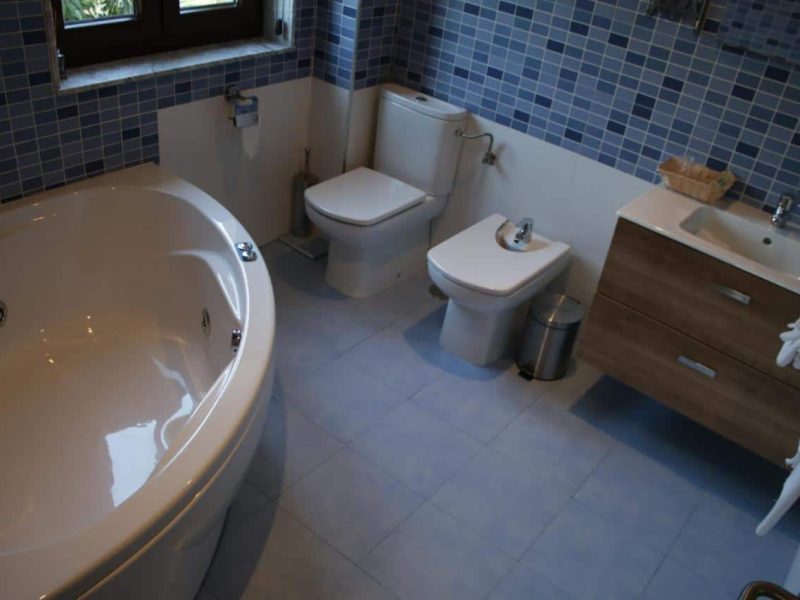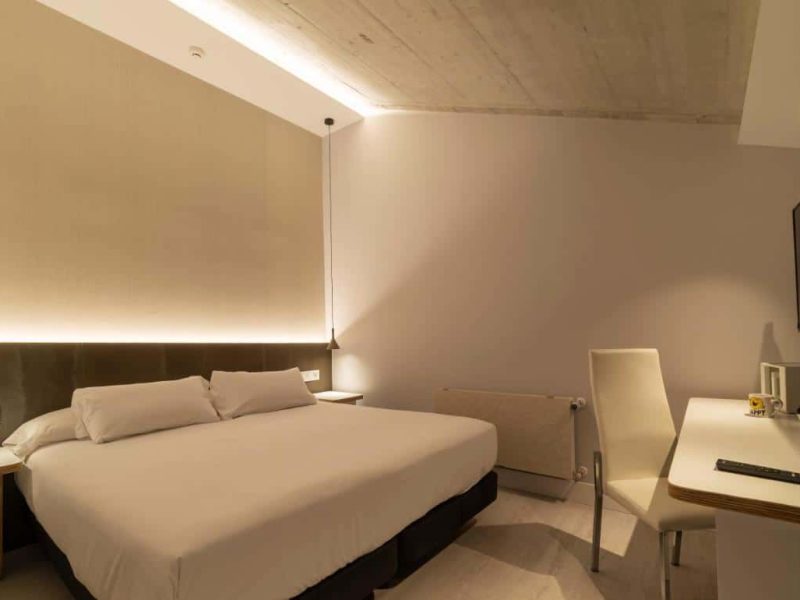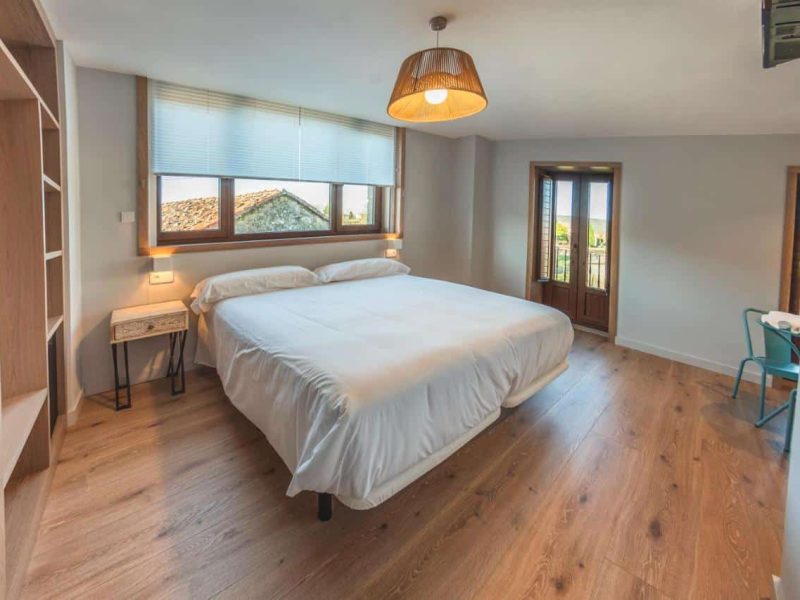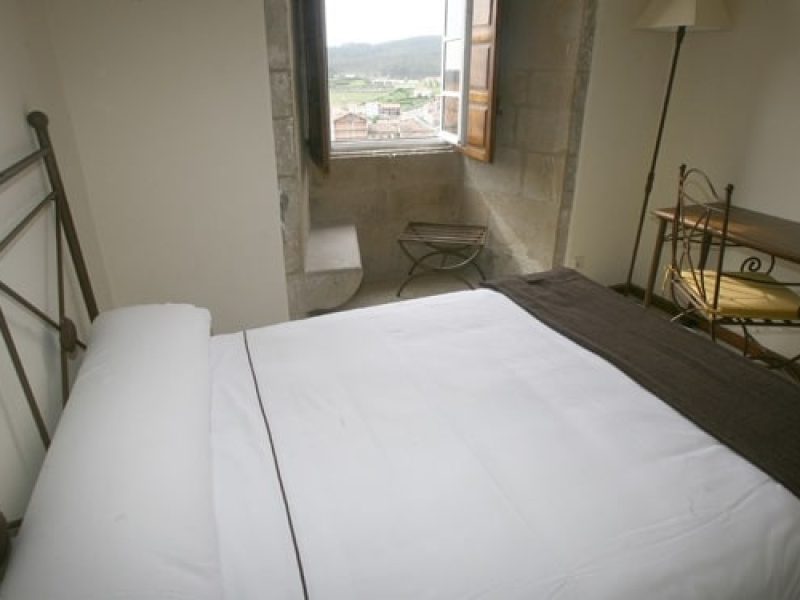Way from Santiago to Finisterre
Discover the beauty and mystery of the Way of Santiago to Finisterre, a journey steeped in history, nature, and spirituality.
Organized Camino de Santiago to Finisterre
A unique journey
Way
Immerse Yourself in History and Landscapes
Would you like to continue your pilgrimage to the end of the known world? The Camino de Santiago to Finisterre is perfect for you, offering a unique spiritual experience in just five stages.
From Mundiplus, we invite you to expand your adventure beyond Santiago de Compostela and discover the beauty of the Galician coast. In just 5 stages, you can enjoy the nature and culture of this region as you head towards the Atlantic Ocean.

What do we offer you?
By choosing the Way to Finisterre with us, you will have access to a range of benefits designed to ensure your comfort, safety, and a personalized experience:
More details
Origin
Santiago

Destination
Finisterre

Duration
7 days / 6 nights / 5 stages

Total Kms
87

Price / person
€570 (double room)
Book now!
Indicate the number of people

Services
Services
Our services are designed to enrich your experience on the Camino de Santiago to Finisterre, ensuring comfort and assistance at every step:
Included Services
- Accommodation in hotels, rural houses and hostels selected for their quality and charm.
- Rooms with total privacy: enjoy rooms with individual bathrooms, ensuring your comfort.
- Diversity in diet: different diets adapted to your dietary needs.
- We take care of the transportation of your belongings between stages, allowing you to transport a package of up to 20 kilos.
- Telephone assistance and a support vehicle in case of emergency throughout the journey.
- Continuous advice at each stage, helping you understand each segment and its points of interest.
- You will receive the Credential and the Pilgrim Scallop, along with a typical Galician product.
- Flexibility in planning, possibility of canceling the trip up to 10 days before the start date.
The price includes all services and VAT, with no hidden charges, for a worry-free experience.
Optional Services
We offer optional services to make your trip even more unforgettable:
- Extension to Muxia, adds one more stage to Muxia for an additional supplement.
- Additional stay in Finisterre, one additional night for €80 per person, with double accommodation and breakfast included.
- Cancellation guarantee for residents in Spain and cancellation protection for residents abroad.
- Trip to Rías Baixas, we consider our proposals for a day trip by car to the Rías Baixas.
- Transportation of extra luggage, option to transport more than one piece of luggage per person at an additional cost.
Remember that the cost of the chosen optional services will be added to the base price of your way. We are committed to making your pilgrimage an unforgettable and worry-free experience. Welcome to the Way!
Finisterre: The End of the Journey
The goal is to reach the majestic coast of Finisterre. Explore the Finisterre lighthouse and enjoy views of the Atlantic Ocean. Finisterre provides a memorable end to your journey from Santiago.
Itinerary and Accommodation
The route from Santiago de Compostela to Finisterre is divided into stages, each with its own charms and challenges. Here is the main itinerary with points of interest and distances:
Day 1: Arrival in Santiago de Compostela
Accommodation and preparation for the start of the Camino. This day is for those who want to leave from here without having previously walked the Camino.
Day 2: Santiago de Compostela - Negreira
- Duration: 5h
- Difficulty: Low
19.8 kilometers through rural areas and picturesque villages.
Day 3: Negreira - Maroñas
- Duration: 5h
- Difficulty: Low
19.8 kilometers through rural areas and picturesque villages.
Day 4: Maroñas - Olveiroa
- Duration: 3h 15m
- Difficulty: Low
13.3 kilometers with beautiful landscapes and small cattle villages.
Day 5: Olveiroa - Cee
- Duration: 4h 30m
- Difficulty: Low
17.9 kilometers, first contact with the sea in Cee and views of Cape Finisterre.
Day 6: Cee - Finisterre
- Duration: 3h 45m
- Difficulty: Low
15.2 kilometers, crossing Corcubión and reaching the coast of Finisterre.
Day 7: Breakfast in Finisterre and end of the journey
Enjoy a leisurely breakfast before leaving, full of unforgettable memories.
Asegúrate de reservar alojamiento con anticipación, ya que puede ser concurrido, especialmente en la temporada alta. ¡Buen viaje y buen Camino!
Quality Accommodation
The Camino de Santiago experience is enhanced with a good rest. We offer quality accommodation in places selected for their comfort and authenticity.

Frequently Asked Questions
Are there sources of drinking water along the Camino de Finisterre?
Yes, along the Camino de Finisterre, there are potable water fountains in most villages and towns. As we mentioned, we recommend always carrying a reusable water bottle and refilling it whenever possible, especially during the longer stretches between villages.
Is it necessary to carry a map or guide to the Camino de Finisterre?
The Camino de Finisterre is well-marked with yellow arrows and other markers. However, carrying a map or guide can be helpful for more details on the stages, distances, and points of interest. Additionally, it will help you plan your day better and know alternatives in case of detours.
Is there a mobile phone signal along the Camino de Finisterre?
The mobile phone signal is generally good in most sections, especially near towns and cities. However, in more rural or mountainous areas, the coverage may be limited. It is recommended to carry a mobile phone with enough battery and, if possible, a portable charger.
What fauna and flora can be observed on the Camino de Finisterre?
On this route, pilgrims can enjoy a diversity of fauna and flora, including oaks, chestnuts, pines, and eucalyptus in terms of vegetation. Likewise, various local birds such as seagulls, hawks, and occasionally even otters near the rivers.
Is it safe to walk the Camino de Finisterre alone?
Yes, although this route is not the most popular, it is completely safe. It is becoming increasingly popular, and you will rarely be completely alone.
What local traditions or customs should be taken into account on this route?
It is important to be respectful of local customs, such as the siesta (where some businesses and services may close at noon), and the traditions of pilgrims, such as leaving a stone at the milestone of the Camino, a practice that symbolizes leaving behind personal burdens.
What to eat and typical dishes on the Camino de Santiago to Finisterre and Muxia?
Doing the Camino to Finisterre and Muxia, or any other, is undoubtedly a challenge from any point of view. Maintaining a proper diet is essential to replenish calories and, above all, to have strength, so the typical cuisine of the area will always be the best option.
In the following lines, we will talk about the gastronomic options you can find on the Route from Santiago to Finisterre. As you may know, this is the only one that has the Cathedral of Santiago as its starting point.
For the palate, it is equally wonderful. In this section, there is also a great variety of dishes you must try. We will use this same text to suggest where to eat on the Camino from Finisterre from Santiago to Muxia.
Typical Dishes of the Camino de Finisterre from Santiago to Muxia
Opting for typical dishes will always be the best option you can have. In addition to teaching you much more about the culture of the area, they are also much more friendly with the wallet and budget. Among those you must try, here are our favorites.
Clams à la Marinera
Of course, since it is a predominantly coastal route, fish and seafood will always be present throughout the Camino. Clams à la marinera are famous in Galician cuisine, in addition to being healthy and delicious.
They are mostly consumed during special occasions and celebrations like Christmas, being one of the favorite starters.
The recipe is quite simple. The clams are cooked in a marinara sauce made with onion, garlic, parsley, white wine, and wheat flour. The result is intense but incredibly delicious.
Galician Churrasco
Especially popular in the La Coruña area, it is perfect if you are a meat and cold cuts lover. This dish is a protagonist in the famous churrascadas, popular gatherings where locals come together to enjoy churrascos made on the grill, accompanied by wine.
There are many places that specialize in this technique, known as asadores. There, you can choose from trays made from pork, one of the most popular meats, beef or if you prefer a combination of many types, including beef.
It is usually especially consumed at lunch, although it is also common for dinner. It can be served with chimichurri, Padrón peppers, French fries or many types of sausages and black pudding. It is a perfect dish to snack on and share.
Salted Conger
Consumed for more than five centuries in this area and although with an origin still somewhat unknown, it comes from the Costa da Morte. It is characterized by its black skin, as it is a cave fish, a nocturnal predator. It has an intense and rather strong flavor, very imposing.
The drying process is quite tedious and long, another reason why this fish is so valued. Its festival is celebrated during Holy Week, and once hydrated before preparation, the conger is pure meat.
Normally it is prepared in a red sauce and served with potatoes. You must keep in mind its intense flavor that at first may be quite overwhelming.
Filloas
We could say that they are a type of crêpe, tortillas, or pancakes. They are very thin but very delicious. They are one of the most traditional desserts in all of Galicia, made with milk.
The traditional ones, which were prepared in the past, were made with pig’s blood, though this has changed over time and now sweet ones dominate.
They are made from wheat flour, eggs, sugar, dry anise, and milk. The mixture is poured into a pan in a thin layer. They are usually served with a much sweeter topping like powdered sugar, chocolate syrup, dulce de leche, and some people add fruits as well.
Octopus a Feira
We are in the heart of Galicia’s coast, so fish and seafood set the gastronomic pace. In this case, Octopus a Feira is one of the most exquisite dishes you will find.
The octopus is cut into one-centimeter slices, seasoned with peppers, olive oil, and coarse salt. It is generously served, accompanied by chunks of potatoes, also seasoned in the same way, known as cachelos.
Garlic Soup
Soups will always be a fundamental part of the diet, and here it is no different. In this area, garlic soup is especially consumed, with light ingredients that make it a favorable option at any time.
It is made with broth, which can be either meat or vegetable, bread, peppers, olive oil, egg, and of course, garlic with some bay leaves.
Scallops
In general, as we mentioned before, shellfish are part of the traditional cuisine. However, scallops are especially consumed, especially along this route.
In Santiago de Compostela, they are practically part of the daily diet. They are usually prepared with a type of sautéed peppers and onions, breadcrumbs sprinkled on top, and some cheese, then they are baked to gratin. They are often served in their own shell.
Caldeirada
As we just told you, fish is commonly consumed here. The caldeirada de peixe, or simply caldeirada, is a kind of festival of fish and shellfish, meaning different varieties.
The traditional recipe is made with hake, ray, turbot, and conger, though it may have some variations. All these ingredients are cooked together in a pot, which is where its name comes from, with potatoes and onions. It is noteworthy that just before taking it off the heat, some bay leaves, vinegar, and a little black pepper are added.
The cooking lasts about 20 minutes. Moreover, it is served hot and can be eaten at any time and season of the year.
As a fun fact, this was a traditional preparation of fishermen. Here, fish of lesser value or those that broke during the fishing process were selected. The combination of all these resulted in what is today a classic of Galician cuisine.
Where to eat on the Camino from Santiago to Finisterre and Muxia?
Best Places to Eat on the Camino from Santiago to Finisterre and Muxia
Now, in this last section from Santiago to Muxia, which boasts one of the most delicious cuisines compared to others, you may need to know some of the best places to enjoy a delicious traditional meal and good service. Among them, we mention:
Pontemaceira
Portor, this is a restaurant that seems to have it all, starting with its wonderful location. It is right in the center of this charming village, with a terrace over the Tambre River that will leave anyone impressed by the waterfalls.
Its menu is quite traditional and homemade. Everything, without neglecting its good service, where you will always feel welcome.
Negreira
We continue moving forward, and the next stop is Casa Barqueiro in Negreira, a completely family-oriented and traditional restaurant. Its menu is mainly based on ox meat and the famous Galician blonde cattle, raised on the private farm located on the outskirts of the town.
As a curious detail, the meat arrives at your table sliced and raw so you can cook it to your ideal point on a Xallas stone.
Also worth mentioning, in Barcala Avenue, Asador Os Arcos is a lovely place to enjoy traditional cuisine. You’ll enjoy generous portions, friendly service, and the most comfortable facilities.
As a grillhouse, you can savor juicy churrascos, but don’t forget the variety of fresh fish and seafood typical of the region. Everything is fresh from the day. Plus, it’s a delightful way to regain strength after a long day.
Cee
On Rúa Real, the main street of this beautiful and cozy town, Restaurante Lecer is perfect for any time of day. You can go for lunch, enjoy a drink in the afternoon, or have dinner. In any case, you will always enjoy good options.
Its offering is, of course, traditional, with a wonderful quality-price-quantity balance, as they say.
You can choose from fish, seafood, meats, desserts, rations, and tapas, and always the best local wines. You can enjoy them in the dining room or on the terrace area, you decide.
Finisterre
On the Ribeira Promenade in Finisterre, Anduriña is a beautiful establishment. Here, besides enjoying traditional cuisine, you can do so while enjoying the most beautiful views of the coast.
They offer a version of traditional Galician cuisine, but with some slightly modern twists and touches of their own.
They have several options including a tasting menu, daily specials, or a well-curated à la carte menu. You will also find the most notable wines to accompany your meal.
Also noteworthy is A Galería, which is more of a bar than a restaurant, where you can opt for simple but equally delicious dishes.
Additionally, as a main feature, this establishment could be described as an improvised museum for pilgrims. You will find mementos everywhere from the travelers who have made it this far over the years.
Muxia
We are now in Muxia, and here the best and most famous place to eat is undoubtedly A lonxa d’Álvaro. Its menu is wide, varied, and above all, generous in terms of portions. Here you can choose from smoked dishes, grilled food, and of course, pickled dishes.
Seafood, being in the heart of Costa da Morte, will always be the star here. Moreover, you will see preparations so original that they will easily leave you impressed.
We also highlight A de Loló, located on Rua Virxe da Barca, a restaurant where you can enjoy a traditional experience, but from a different perspective.
You will notice the delicate service from the staff, very well-decorated and recently renovated facilities. The available menu is ideal for everyone, with a variety of fish, meats, salads, stews, and many desserts.
After a long day of walking, this place is a wonderful way to end the day, accompanied by the best flavors.
What to see on the Camino de Santiago to Finisterre and Muxia
Stage from Santiago to Negreira
We begin our section on what to see on our Camino de Santiago with an organized trip with the village of Quintans, a small town composed of stone houses, one of which has a cross. Highlight the bridge over the Roxos River, of medieval origin.
In Augapesada, we can observe its medieval bridge as well as the recently restored cobbled way.
In Ponte Maceira, the magnificent medieval bridge from the late 14th century stands out, composed of five arches of varying sizes, known as A Ponte Vella, through which the Tambre River is crossed.
On the other side of the bridge, we find the Chapel of Carmen or San Blas from the 18th century. Near it is the Pazo de Baladrón, built between 1945 and 1955.
In Negreira, special mention is made of the Pazo de Cotón, of medieval origin with numerous modifications from the 18th to the 20th centuries. On its facade, you can see a dozen coats of arms belonging to the families that inhabited it.
Also noteworthy are the Chapel of San Mauro, dating from the 18th century, and the Church of San Xulian.
Stages Negreira-Maroñas-Olveiroa
First in Zas, we highlight the small Church of San Mamede, which due to its size can be considered a chapel.
Past Piaxe, we encounter one of the best-preserved crosses along our route.
In Santa Mariña, we highlight a Romanesque temple with a single nave and a rectangular apse, with two simple doorways.
In Bon Xesús, there is a very suggestive cross due to its roughness.
In Corzón, we highlight the Church of San Cristovo with its bell tower.
In Olveiroa, the Church of Santiago stands out, with a sober construction probably of Romanesque origin. The door, with a bell tower, is Baroque, and the lintel of the door has a peculiar image of the Apostle of uncertain origin.
Near Olveiroa, we find the Chapel of Santa Lucía, whose fountain at the entrance is said to have healing properties for vision problems.
Stage from Olveiroa to Cee
In Cee, the Church of Santa Maria de Xunqueira stands out, which still retains Gothic elements.
Visit the modernist Casa Mayán and Guillen, as well as the rector’s house and the Pazo de Cotón.
As a counterpoint, we can also relax by enjoying the views from the Concha beach.
Stage from Cee to Finisterre
At Cape Fisterra, we find the old lighthouse. There, the spirit and nature, the sea and the sky, the legend and the present come together in what the ancients believed to be the end of the known world, after surely witnessing its magnificent sunsets.
The ancients performed three rites of purification, death, and resurrection:
– Body purification: This is done at the Langosteira beach, two kilometers before entering the town. The pilgrim would remove the dust from the entire route and start the countdown to reach the end of the way, which is both difficult and important for every pilgrim.
– See the sunset: Death and Resurrection, the death of the sun in the sea and the resurrection the next day, like the resurrection of the pilgrim in the daily routine of their walk.
Finisterre is deeply connected with pre-Christian stories that tell us of the existence of pagan cults and their subsequent Christianization.
– Burn the clothes: in the past, clothes were burned. Through this rite, the pilgrim would get rid of everything material, and with the fire, they would try to burn everything they wanted to shed and that would not help them begin a new life. This practice is now prohibited!
It is related to the Jacobean route and the arrival of the remains of the Apostle James to Galicia. The Jacobean tradition of the Galician Finisterre is based on two of Galicia’s most popular devotions: the Holy Christ, which is found in the Church of Santa María de Areas, of medieval origin, with a Romanesque main entrance and a Gothic maritime style on the outside, in Finisterre, where Licenciado Molina (16th century) says that it is the destination for most pilgrims coming to the Apostle.
Stage from Finisterre to Muxia
In Lires, we can visit the Temple of San Estevo from the early 17th century.
In Muxía, legend has it that the Virgin Mary, transported in a stone boat, appeared here to the Apostle James to encourage him in his mission of evangelization.
We can contemplate “Las Piedras Santas” (The Holy Stones), which, according to the Jacobean legend, are remnants of the ship in which the Virgin Mary arrived. Among them are: La Pedra de Abalar (representing the sail), the Pedra dos Cadris, and the Pedra do Timon (known as the Lovers’ Stone).
In the center of this town, we find the Church of Santa María.
We conclude our post on what to see on the Camino from Finisterre/Muxia with the most important place on the route, the Sanctuary of Nuestra Señora Da Barca, where you will find the Chapel of the Virgin, as well as ship models hung as offerings made by sailors to the Virgin.
After the sinking of the “Prestige,” a Monolith was built to remember this tragic natural catastrophe.
How to get to Santiago de Compostela
To reach the start of the first stage, which is none other than the holy city of Santiago, we provide the following alternatives:
Option 1: Bus. Santiago de Compostela Central Bus Station. Calle San Cayetano, s/n. Phone: +34 981 59 60 50. Connections with the main Galician towns and national and international destinations.
Option 2: Private Transfer.
Option 3: Train
Renfe Station in Santiago de Compostela. Rúa do Hórreo. Phone: 981 58 77 00. Offers:
– Two daily trains to Madrid (Talgo and express) and one to Bilbao.
– Fourteen daily trains to A Coruña, eleven to Vigo, and eight to Ourense.
– Connections with Portugal through Vigo (three daily trains to Porto), and with France through the A Coruña-Vigo-Barcelona line.
Option 4: Airplane
You can fly to Santiago de Compostela Airport “Lavacolla”
I walk to the end of the booming world
The Camino to Santiago via the route to Finisterre and Muxia is the most spiritual and mystical Jacobean route of all. This is the extension that connects Santiago de Compostela with the mysterious and enigmatic Costa da Morte. Yes, it is done in reverse, and it is a journey that is thousands of years old.
In addition to having more than imposing and impressive landscapes, it reaches the Atlantic Ocean. Here, according to tradition, the souls of the pilgrims are purified.
More and more pilgrims, after completing, for example, the last 100 kilometers of the Camino from Sarria to Santiago, decide to head towards what, in ancient times, was considered the end of the known world, the “end of the earth”. For many years, many have believed that the Camino does not end at the Cathedral of Santiago and extend their journey to Finisterre and Muxia (the place where the Virgin arrived by boat to encourage the Apostle Santiago).
It is also possible to walk the Camino in reverse from Finisterre, as the ancient pilgrims did who had to return home, many of whom ended up settling in Spain in many of the villages along their return journey.
Camino de Santiago backwards
Did you know that you can walk the Camino de Santiago in reverse? In fact, in ancient times, all pilgrims had to return to their cities/countries of origin. The Camino from Muxia or Finisterre to the Cathedral of Santiago is the main route used by pilgrims to do the Camino in the opposite direction. Walking towards what was once considered “the end of the known world,” or towards the holy city of Santiago, is a completely different experience. The perspective and landscapes give the feeling of walking a new and different Camino that will surprise you.
Our proposal, which can be fully adapted to your needs, would be as follows:
ITINERARY (7 days – 6 nights – 5 stages)
Day 1.- Arrival in Muxia. Accommodation.
Day 2. – Stage Muxia – Fisterra (29 km)
Day 3. – Stage Fisterra – Corcubion (14 km)
Day 4. – Stage Corcubion – Olveiroa (21 km)
Day 5.- Stage Olveiroa – Negreira (33 km)
Day 6.- Stage Negreira – Santiago de Compostela (22 km)
Day 7.- Breakfast. End of our services.
Do you still have doubts about the Camino?
This video will give you a more detailed and visual look at what to expect on your adventure. Don’t miss it!




